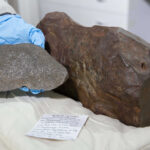What began as a childhood fascination with stars has turned into one of the most striking discoveries in recent astronomy. Matteo Paz, a self-taught high school student with interest in programming and artificial intelligence, has managed to identify 1.5 million new space objects after analysing old NASA archives that had been unprocessed for years due to their magnitude.
Under the guidance of astronomer Davy Kirkpatrick of the Infrared Data Processing and Analysis Center (IPAC), Paz had access to the records of the NEOWISE infrared telescope, an instrument that has been scanning the sky for over a decade.
This telescope has accumulated an enormous amount of thermal information on stars, quasars, and variable objects, which until now had been an insurmountable challenge for human analysis.
He developed an algorithm in just six weeks
Faced with this wall of data, the young man decided to create his own tool to process it at scale. In just six weeks, Paz developed a machine learning algorithm capable of detecting subtle changes in the brightness of celestial bodies over time.
These changes, known as “variability,” can signal the presence of astrophysical phenomena, such as stellar explosions, planetary transits, or hidden binary systems. The algorithm’s extraordinary value was not only its ability to process massive amounts of data, but also its accuracy in distinguishing relevant patterns among billions of records.
The result was astounding: 1.5 million potentially new variable objects that no scientist had ever catalogued before. The discovery represents one of the largest updates to our map of the universe in a single installment. According to Kirkpatrick, this project demonstrates the transformative potential of artificial intelligence when combined with new generations of scientists trained from a young age in the intersection of computer science and astrophysics.
What began as a school concern may become the basis for new lines of astronomical research.
You can read the official article here.





